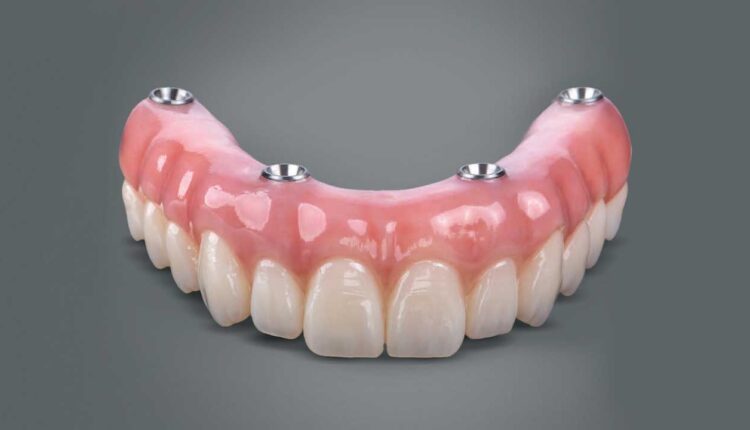The “All-on-4” dental implant procedure is a popular and innovative technique used to replace a full arch of missing teeth with a fixed dental prosthesis. It is designed for patients who have lost most or all of their teeth and wish to restore their smile and function. The All-on-4 concept provides a permanent and effective solution using just four dental implants to support a complete set of teeth.
Here’s how the All-on-4 implant procedure typically works:
- Comprehensive Evaluation: Before the procedure, your dentist or oral surgeon will conduct a thorough evaluation of your oral health, including X-rays, CT scans, and impressions of your mouth. This assessment helps determine whether you are a suitable candidate for the All-on-4 procedure.
- Treatment Planning: Based on the evaluation results, a personalized treatment plan is created. This plan includes the positioning of the dental implants and the design of the prosthetic teeth.
- Implant Placement: During the surgery, four dental implants are strategically placed in the jawbone. Two implants are usually inserted in the front of the jaw, where the bone density is typically higher, and two implants are placed towards the back at an angle to maximize contact with the available bone.
- Temporary Prosthesis: After implant placement, a temporary set of teeth is attached to the implants on the same day. These temporary teeth allow you to have a functional and aesthetically pleasing smile while the implants integrate with the jawbone during the healing process.
- Osseointegration: Over the next few months, the dental implants will fuse with the surrounding bone through a process called osseointegration. This provides a stable foundation for the final restoration.
- Final Prosthesis: Once the osseointegration is complete, a final set of custom-made, permanent teeth is fabricated. This prosthesis is designed to fit your mouth comfortably and function like natural teeth.
Advantages of the All-on-4 implant procedure include:
- Reduced need for bone grafting: By angling the posterior implants, the procedure can often avoid the need for bone grafting, even in patients with reduced jawbone density.
- Faster treatment time: The All-on-4 concept allows for a shorter treatment timeline compared to traditional implant-supported restorations.
- Improved aesthetics and function: The final prosthesis is designed to look and feel like natural teeth, providing an aesthetically pleasing and functional outcome.
- Greater stability: The strategic placement of the implants provides excellent stability for the prosthesis, enhancing chewing and speaking abilities.
It’s important to note that the All-on-4 procedure is a significant dental treatment that requires careful planning and execution by skilled dental professionals. If you are considering this option, consult with a qualified dentist or oral surgeon to determine if you are a suitable candidate and to receive personalized advice and care.

